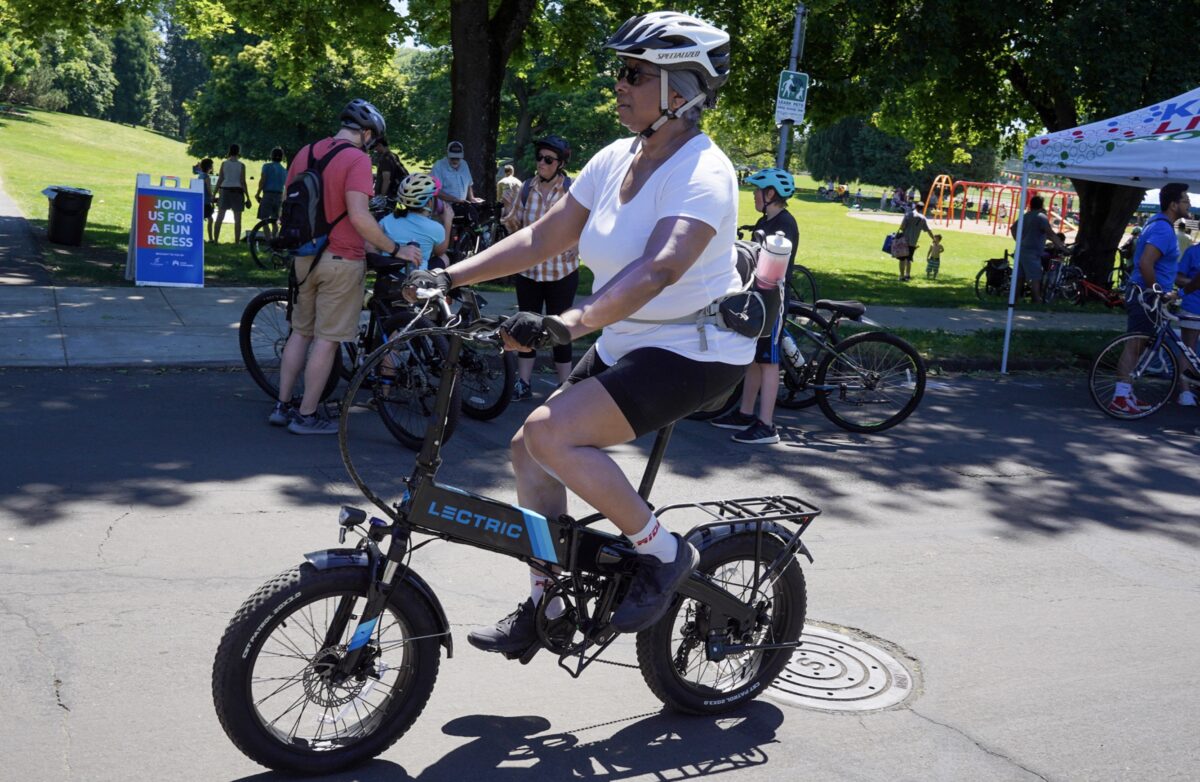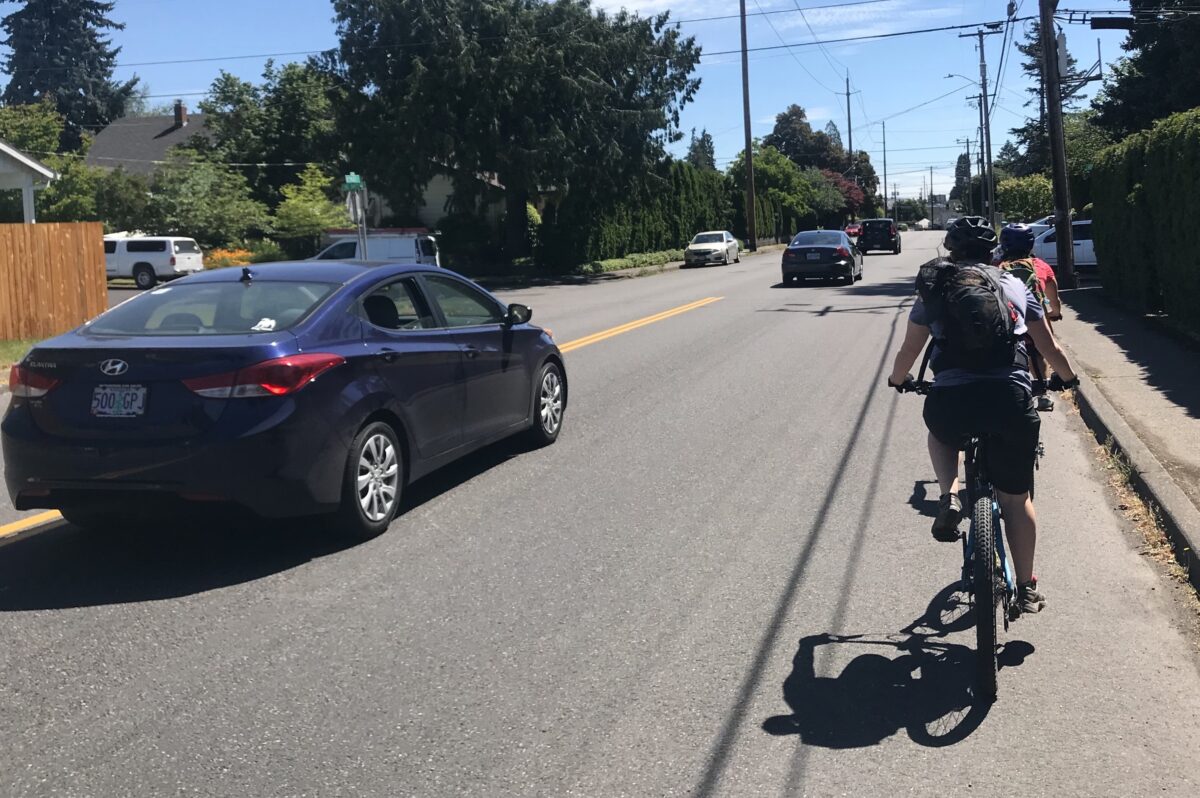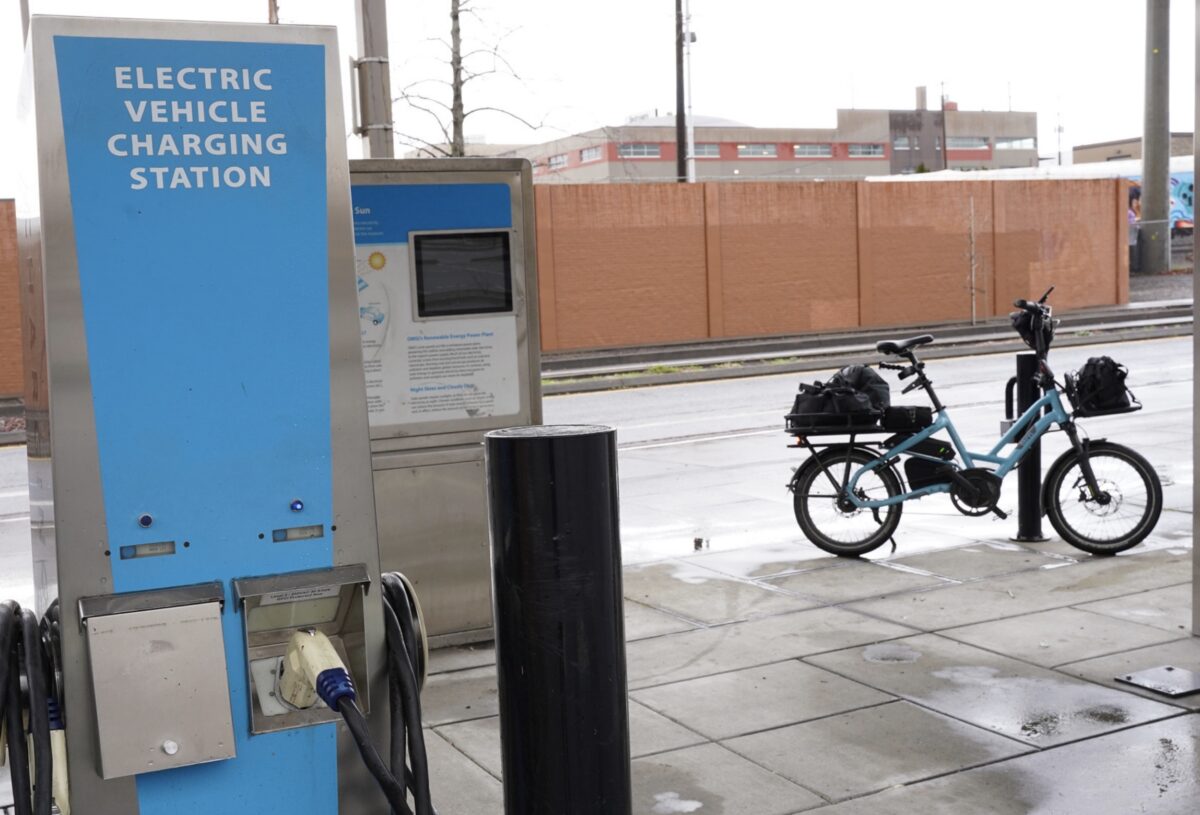
E-bikes are to transportation what Steph Curry is to basketball*. They have changed the game. And there’s no going back.
The e-bike revolution has been building for years, but it feels like the scales have tipped even more lately due to better and cheaper products on the market, high gas prices, climate change concerns, a growing anti-car movement, a desire for more community-centered mobility, and many other factors.
As I see a larger and larger percentage of Portland’s fleet electrify, it feels like our best practices and transportation policies haven’t kept up. For decades, bike planners have used a playbook that was created with non-electric (also called “acoustic”) bikes in mind. Put another way, all our modeling and assumptions around how to design and engineer a bike-friendly city have been done with a standard, non-electric bike in mind.
But e-bikes are different from their non-motorized cousins. Do they require a different planning approach?
I’ve kept a list of bike planning topics that might need to evolve in order to better serve e-bike riders. Give it a read and let me know if you have something to add…
Time and Distance
It’s easier to go faster on an e-bike, so I think it’s reasonable to assume that most people go faster on an e-bike than a conventional bike. Most e-bikes have a 20 mph top speed, but many of them top out at 28. (Another category goes even faster, but I don’t consider those “bikes” for purposes of this discussion.)
The folks at Portland Bureau of Transportation (PBOT) use an average cycling speed of about 10-12 mph to make all their assumptions about time and distance. Why does this matter? Well, you know those handy wayfinding signs (right) on neighborhood greenways that tell you how far away something is and how long it will take you to bike there? Those assume you ride about 10 mph. (And don’t get me started about how Google and Apple need to have an “E-bike” route option in order to display accurate trip times.)
Signal timing is another big one. Portland has many bike signals, and even more traffic signals that take biking speeds into account. If those calculations are based on people riding 10-12 mph, PBOT’s timings won’t be properly synced to actual behaviors.
The average speed of Portland’s bike fleet has gone up — and will continue to go up — in the coming years. Our bike-specific infrastructure should reflect these higher speeds not just out of respect for accuracy, but because when it comes to choosing a transportation mode, speed matters. Faster bike trip times will make cycling more competitive with driving and will encourage more people to ride.
Route Choices

A big part of local bike planning is deciding where the “bike route” should go. In Portland, many of those decisions are based on the riding behaviors of people on non-electric bikes.
But e-bikes can completely change where and how someone rides. Their larger size, hefty stature, stronger brakes, bigger tires, and so on, embue riders with a greater sense of power than traditional bikes. Add the ease of greater speeds, and you have a vehicle that balances out the power dynamic on the road in a way that adds new confidence to some riders.
Taking off from a stop at a large, sketchy intersection with a load of cargo? No problem on an e-bike. Taking the lane to make a left turn? No problem on an e-bike. Sharing the road with car users? Less of a problem on an e-bike.
When I’m in a hurry on my e-bike, I don’t use designated bike routes as much as I used to. I want the most direct route I can find. And because my bike gives me more confidence to ride in traffic with car users, I find myself on collectors (like NE Prescott or SE Belmont), commercial district streets (N Mississippi, 28th, Hawthorne, NE Alberta) and even arterials (MLK/Grand, Lombard), much more often.
Big crossings, hills, or busy streets that used to be the death knell of a recommended bike route and cause planners to scribble circuitous routes around them. But with e-bikes, we should expand our map and be less afraid to mix cars and bikes.
What would our bike maps look like if we assumed more people were using e-bikes? I think we’d have a lot more direct routes and shorter travel time estimates, both of which would make bicycling even more attractive than driving for more people.
Parking
E-bikes need to be plugged in sometimes. They are heavier, and they often have a much larger footprint than traditional bikes. Their frame tubes also have wider diameters. These are all things bike parking designs need to take into account.
For instance, hook racks are relatively popular in our city. TriMet uses them on MAX and they’re probably the most popular offering for apartment/condo builders because of how they save floor space. Hooks have always been bad in terms of accessibility, but with many e-bikes weighing 55-70 pounds, they are 100% unusable for most people.
And if you thought people were concerned about bike theft with a $750 commuter bike, wait until they drop $3-4,000 on an e-bike! In the e-bike future, folks will simply not ride to a destination that doesn’t have secure bike parking.
Misc.
Other stuff that we need to adjust to the revolution include:
- Education and maintenance: Any nonprofit or government agency that offers bike clinics needs to be ready to answer questions about battery storage, charging, and other e-bike tech.
- Street design: We already offer constrained infrastructure too many parts of our bike network. I’m talking about unnecessary chicanes, awkward transitions from street-to-sidewalk, bollards on paths, and so on. With larger e-bikes (especially the cargo variety), these things create even larger barriers to use.
That’s my list so far. I’m sure I’ll add to it in the coming months and years. What do you think? How else should our best practices and assumptions change to fully embrace this revolution?
*Steph Curry, a member of several NBA championship teams with the Golden State Warriors, changed the game of basketball by introducing a level of proficiency with long-distance shots (“3-pointers”) that was previously unheard of. As the greatest shooter ever he has influenced how everyone plays and coaches the game.



